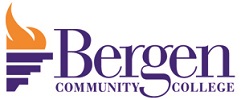All students benefit from working with information and handouts made available in accessible, electronic format. In addition, the following are possible accommodations that may be helpful to students. This is not a complete list of accommodations that may be utilized.
This information is taken from the Do It! Website at Washington State University
Low Vision
- Large-print handouts
- Computers equipped to enlarge screen characters and images
Blindness
- Audio taped, Brailled, or electronic-formatted notes and handouts
- Verbal descriptions of visual aids
- Raised-line drawings and tactile models of graphic materials
- Computers with large monitors and with optical character readers, speech output, Braille screen displays, and printer output
Hearing Impairments
- Interpreters, FM systems, captioned videotapes
- Use of visual aids
- Written instructions, demonstration summaries
- Visual warning system for emergencies
- Use of electronic mail for communication and private discussions.
Learning Disabilities
- Note takers, audio taped sessions
- Extra time for sessions
- Visual, aural, and tactile instructional demonstrations
- Computers with speech output, spell checker, and grammar checker.
Mobility Impairments
- Note takers
- Tutoring sessions in accessible locations
- Adjustable tables; materials located within reach
- Computers equipped with special input device (e.g., speech input, Morse code, alternative keyboards).
Health Impairments
- Note takers
- Flexible scheduling or attendance requirements
- Extra time for sessions
- Use of email for communication and discussion
